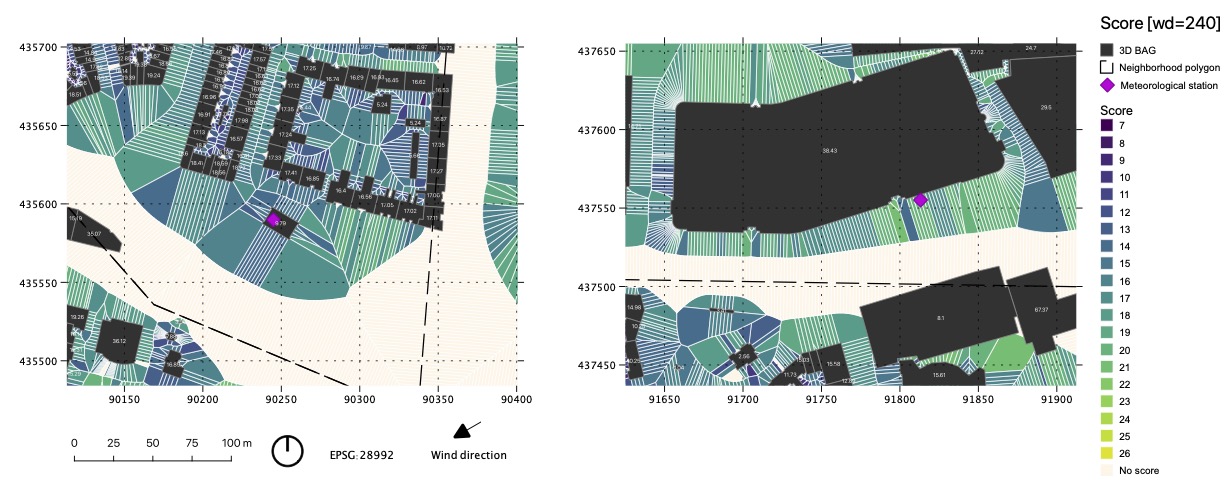Abstract
Wind has a profound impact on the meteorological and environmental conditions in cities. And so, by understanding wind flow behavior within the urban environment, we can use the increasingly available open data to contribute to the design of healthy cities. This Master’s thesis presents a methodology to compute urban morphological parameters and its effect on potential wind velocity. The proposed method may serve as an complementary method to Computational Fluid Dynamics (CFD) simulation or scaled wind tunnel tests. The research question in this thesis is: Can we use urban morphology to automatically calculate potential increase in wind velocity?
To answer this, first an introduction to wind flows in the urban environment is presented. Then, several methodologies are presented to compute the urban morphological parameters, such as the Urban Canyon, wind- or leeward facade, Angle of Attack and terrain roughness length. The method relies on the use of a Voronoi diagram, with cells describing the morphology. After, the urban morphological parameters are related to potential wind velocity through a scoring method. Using two meteorological stations inside the area of interest, the mean wind velocity is compared to the scores. The result show that both stations show a higher mean wind velocity for higher scores. However, more research is necessary to validate this outcome and a recommendation is given to compare the result of this thesis to a CFD simulation.
Main finding: urban morphology analysis seemed to host large potential for the prediction of wind changes.
Main limitation: the study was just analytical and further analysis is currently on-going with CFD to complement the thesis discoveries.
